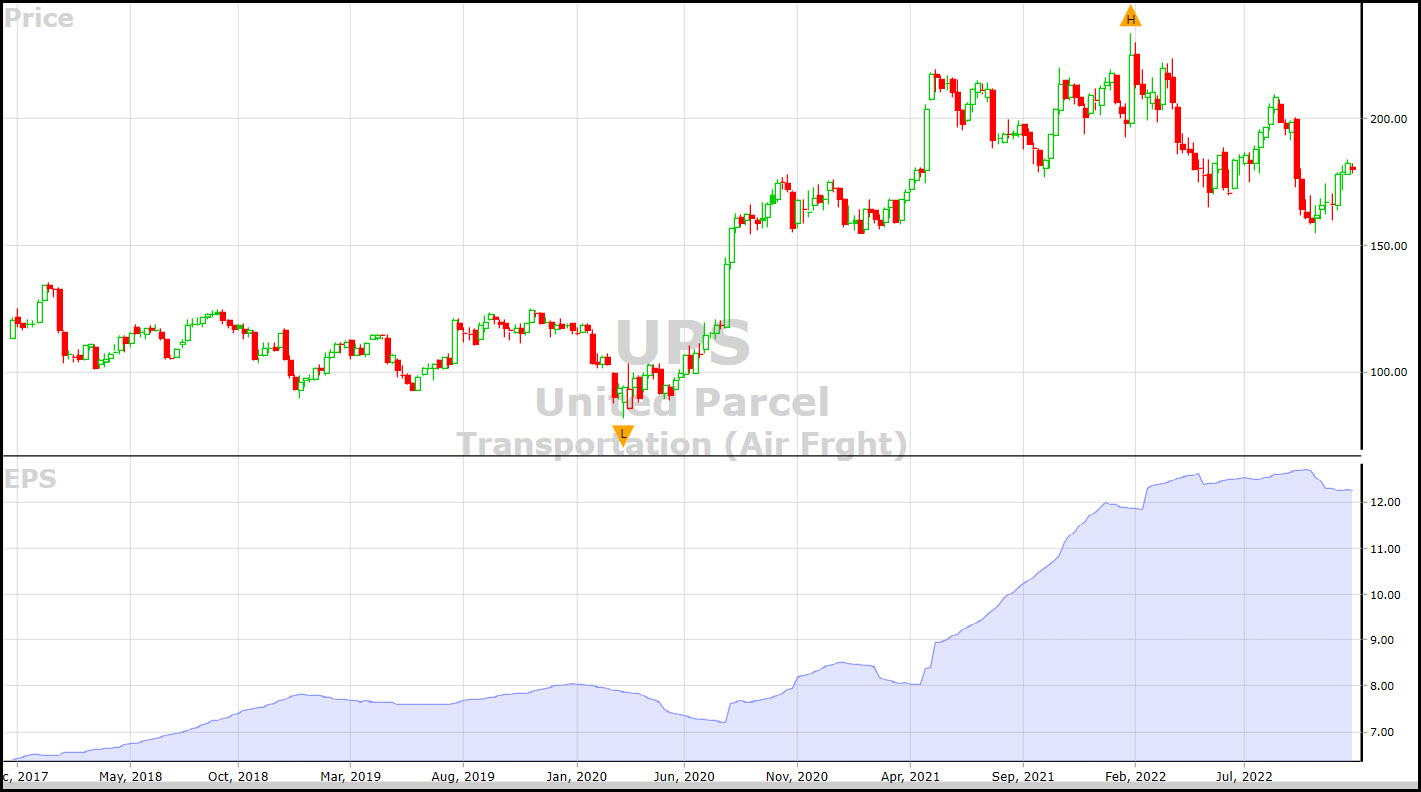Everyone wants to retire early – but few actually make this goal a reality. However, the individuals who end up retiring early share a few common traits – and luck isn’t one of them. Rather, they followed sound principles for investing for early retirement.
And today, we’re going to share those very same tactics with you. By the end of this guide, you’ll know how to retire early. The best part? No need to compromise on your dream retirement lifestyle!
Hopefully, you’re not here reading this guide as you approach retirement. Because the #1 way to retire early is to start early. However, if time isn’t on your side, that doesn’t mean all hope is lost. There are still a few tips we have to help you enjoy early retirement. Before we get to all that, though, let’s start by defining what retiring early means in this day and age.
What is Retiring Early, Exactly?
What constitutes “early retirement” in 2022? These days, the average retirement age is 65. But many individuals are able to call it quits earlier than that, retiring at about 62.
However, even that isn’t really retiring early in our opinion.
There are countless anecdotes of people retiring in their 50s or even their 40s and living off the returns their investments make. The secret? Start saving early and invest for retirement income so your nest egg doesn’t dry up too fast.
Is Investing for Early Retirement Even Possible Anymore?
Yes – investing for early retirement is possible nowadays. And, we’d argue that it’s actually more possible than ever before as the digital age has made access to information much greater. You have more resources at your fingertips than at any point in history.
But, we do want to help you set your expectations here. Investing for early retirement requires you to do a few things:
- Start investing early
- Carefully plan your cost of living & withdrawal rate
- Strategically choose your income-producing investments during retirement
Sounds simple, right? But if you’re here reading this article because you’re in your late 50s, and want to shave a few years off your retirement timeline, you are obviously unable to go back in time and start investing earlier. All you can do at this point is make do with what you have.
That isn’t to say you still can’t retire early – you can. You’ll just need to be more strategic in choosing the investments you make to ensure they’re working as efficiently as possible. And, you’ll need to carefully calculate your savings account and plan withdrawals.
So, yes – investing for early retirement is possible. And armed with the tips we’re going to share below, you’ll be well on your way to beating the average and enjoying early retirement. Let’s not waste any more time – here’s how to retire early.
How to Retire Early: Tips for Investing for Early Retirement While Still Enjoying Your Dream Retirement Lifestyle
As we’ve mentioned so far, there are really just a few key steps to retiring early. And we’ll break them down in their entirety below.
Now, we don’t want to over-simplify things for you. Each of these steps is convoluted and features plenty of steps within itself. But, we also don’t want to overwhelm you with more information than you need. So, take the information below and dig deeper to start making your goal of early retirement a reality.
First, let’s talk about the importance of starting early.
If You Want to Retire Early, Start Investing Early!
This is the one step in how to retire early that you may not have control over. If you didn’t start early, there’s nothing you can do about it at this point – other than kick yourself for prolonging this process.
But, what is the advantage of investing early for retirement, exactly? Simple – the compounding effects of time allow you to invest less total cash over the course of your life to arrive at the same dollar amount saved up as someone who started later. Here’s a quick example to paint the picture for you:
Say you get you (or your kid) get a summer job at the age of 16. There are no real expenses at the time – other than maybe a bit of fun. So, you save up $6,000 to contribute to a retirement account. Based on the average rate of return over the past 30 years, that one-time investment would compound into a whopping $600,000 by the time you’re 62!
How is this possible? The returns that your initial deposit earns over the next 46 years compound and continue to grow exponentially. Now – remember, that’s a one-time investment. Imagine if you made regular monthly deposits to your account over the course of time…retiring early is almost guaranteed!
As you can see, starting to invest as soon as possible will pay off by allowing you to spend less money to unlock your retirement lifestyle in a timely manner. The later you start, the more you have to invest.
But, simply saving up a sizable nest egg is just one piece of the puzzle. You then need to consider how much you can spend annually without your account drying up too soon.
Carefully Consider Your Annual Retirement Spending
As you ponder the possibility of retiring early, you’ll need to sit down with your spouse (if applicable) and determine how far you can stretch the savings you’ve accumulated over the years.
Start by figuring out your biggest expenses – health care, housing, and other costs of living. These will vary from person to person. Some retirees decide to sell their homes and travel the world. This is obviously a more expensive lifestyle, but the sale of your home can help accommodate it. However, retirees are content to relocate to a more affordable retirement community and kick their feet up for a few years, doing little more than golfing and visiting family/friends.
Once you have an idea of what your annual cost of living will be in retirement, you can run the numbers and see how many years of cash need to have saved in your account.
Let’s say you are planning to retire early around 50 years old. It’s safe to say you have up to 50 years of retirement life ahead of you. If you spend $50,000 a year, you would need $2.5 million saved to sustain your lifestyle.
Plan Out Your Withdrawal Rate
The key takeaway with investing during retirement is finding the ideal withdrawal rate. After all, your money needs to continue growing throughout retirement since you’re starting so early. If you take out too much, the returns start to drop.
If you’re researching how to retire early, it’s like you’ve come across the FIRE movement – AKA Financial Independence, Retire Early. This is a practice inspired by the teachings of financial planner William Bengen back in the early 90s.
The principles here are that with a retirement portfolio allocation of 60% stocks and 40% bonds, a retired person is able to spend up to 4% of their nest egg in their first year of retirement. Then, in sequential years, the withdrawal rate can rise up with the rate of inflation. Following the 4% rule, your portfolio should last over 30 years.
Sounds great…but we’re here talking about how to retire early. That 4% rule may not cut it for those who look to retire before 50. Bengen found that those who want to enjoy a 40-50 year retirement lifestyle should abide by a 3-3.5% withdrawal rate instead.
Managing Your Portfolio Over Time
So you know you’re going to withdraw up to 3.5% from your nest egg to cover your annual living expenses every year. But – where should the withdrawals come from? More specifically, what is the allocation of the rest of your capital going to be?
As we discussed in a separate article, we encourage you to start by putting 2 years of expenses into cash or cash instruments. The rest should be allocated across stocks and bonds. But because you’re really pushing the limits of retirement here, the ratio of stocks to bonds needs to be skewed toward stocks. Keep reading to learn why…
Invest for Income During Retirement
Now, this is the most important step in how to retire early: investing your money in higher-yielding assets.
A typical retirement plan may feature more low-risk, low-reward investment vehicles like bonds or funds. There are all sorts of types of investments for retirement to choose from when building your retirement portfolio.
But if you plan on investing early, you can’t rely on these low-income-producing investments. You need to put your money to work in higher-risk, higher-return assets – like stocks. You can also invest in the best index funds for retirement.
Creating a retirement portfolio allocation that leans more risk-heavy can be stressful for certain individuals. But, this is the tradeoff for retiring early. And when you use the right investment strategies for retirement, you can mitigate as much risk as possible. In fact, there is one tool you need to see. It will help you effortlessly create & manage a retirement stock portfolio that earns ample returns to fuel your lifestyle.
Keep reading towards the end to learn more…first, let’s talk about taxes.
Factor in Taxes
Depending on where you’ve been building your nest egg – either a 401K or IRA – you may be subject to early withdrawal penalties by retiring early (before 59.5 years old). There are ways you can jump through hoops to avoid paying taxes on these types of withdrawals – a tax professional can help you navigate this process.
There are best practices for which of your accounts you should pull from first as well. For example, experts suggest pulling interest and dividends from taxable accounts first. These accounts are subject to taxes whether you use them or not, so you might as well get them out of the way. After that, you can pull the principal from those same accounts. Then, you will likely be left with traditional requirement accounts or a ROTH.
One Quick Tip on Investing for Early Retirement…
One final tip we want to offer anyone looking into investing for early retirement is to first invest in yourself. You need to get the best resources and tools available to make this happen. And no – you don’t need a financial advisor. You can do all this yourself with just a bit of education (like our guide to trading strategies for beginners) and the right stock forecasting tool: like VectorVest.
VectorVest helps you pick the best retirement stocks with our pre-built screeners in place. These will bring up the top dividend-paying stocks at any given time so you can build and manage your portfolio without any experience or guesswork. And, the time commitment is super low as well.
That’s because the system makes stock analysis as simple and straightforward as possible. Rather than forcing you to analyze stock graphs or track technical trading indicators, you can just pick the stocks with the highest overall rating and make your vision of early retirement a reality!
Whether you just want to pick the best stocks for long term trading or you want to learn swing trading – the platform will prove to be an invaluable tool along your journey. Just wait till you see what it can do for you.
Learn more about how it works with a free stock analysis here.
Final Thoughts on How to Retire Early
That’s just about everything you need to know on how to retire early. As you can see, investing for early retirement isn’t nearly as daunting as you may have originally thought. If you’re here reading this guide in your 20s or 30s (the earlier, the better), you are well equipped to start investing now and prepare to retire earlier than the average.
It just takes some careful planning and strategic execution – both of which VectorVest can help you with. The only thing left to do now is start taking what you’ve learned and put it into practice! Get more retirement planning advice in our blog and make your dream retirement a reality.





Leave A Comment